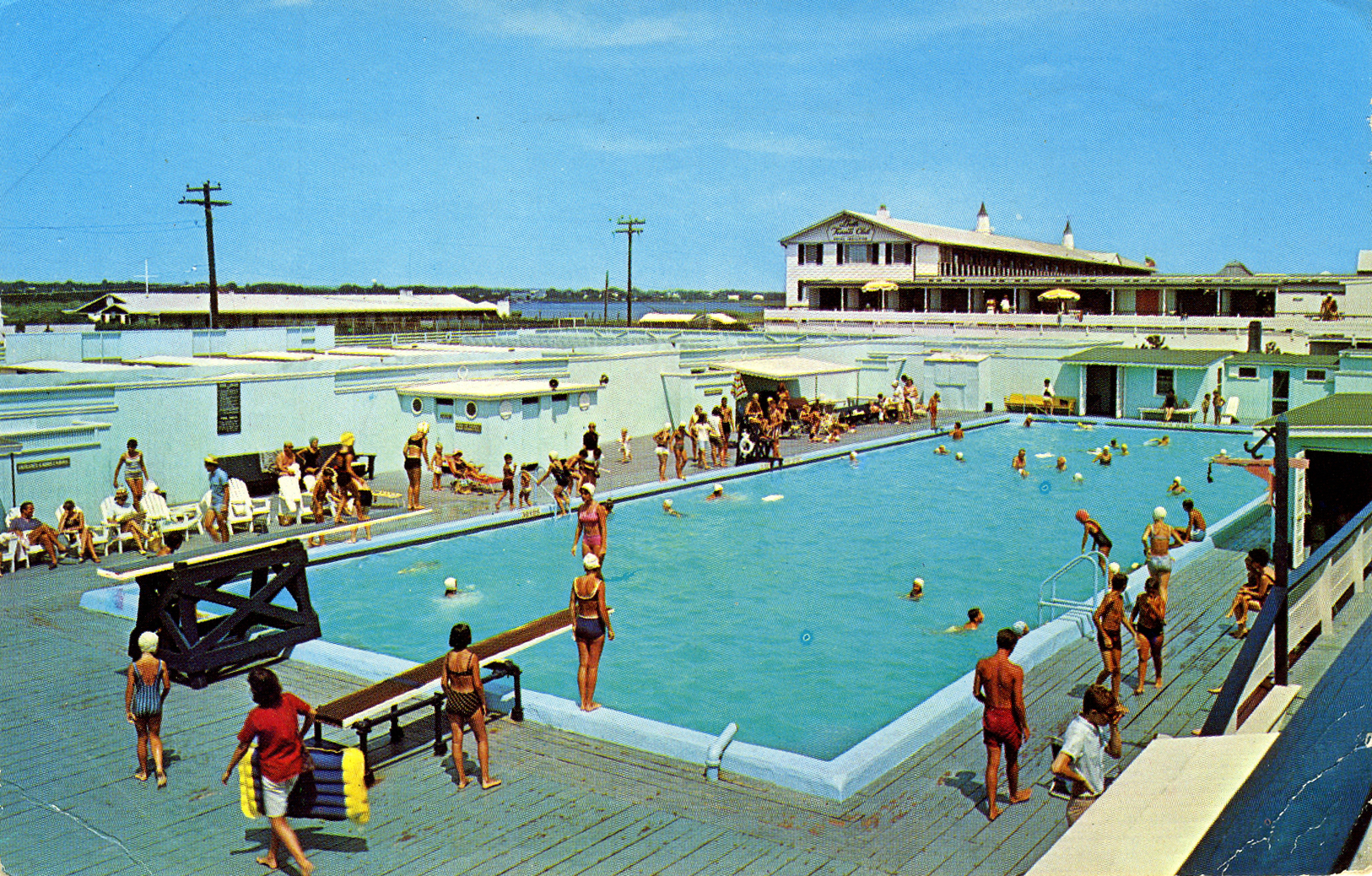
At the Swordfish Beach Club in Westhampton Beach, the swimming pool’s waters almost blended in with the deep-blue summer’s sky. Surrounding stalls, painted blue and white, add to the effect.
And after 107 years of mesmerizing size and hue, the pool is being torn-up, replaced by an identical to-code twin — Beach club members said the pool was one of the oldest in the nation.
“Over its 107-year history, thousands of people have probably learned how to swim in that pool,” said Brian McCarthy, a lifelong member and self-taught historian of the club and the Westhampton area. “[It’s] among the oldest in the United States.”
The Swordfish Beach Club, founded in 1914, sits at the intersection of Jessup Lane and Dune Road in Westhampton Beach. Facing the beach, the Atlantic Ocean’s waters have posed and dealt their fair share of disaster to the club over the years — the pool, however, remained steady.
Mr. McCarthy, a corporate lawyer based in Pacific Palisades, California, said the pool’s construction, in 1914, dates back to the Atwater family — specifically, WIlliam C. Atwater, owner of several coal companies and vice president of the West Bay Company, according to Congressional stock records from 1931. Mr. Atwater commissioned the pool and beach club’s construction, naming it the West Bay Club.
Since then, the pool has survived through hurricanes and disasters that often destroyed the surrounding club and town.
This includes the 1938 “Long Island Express” storm, a Category 3 hurricane that devastated Long Island with high winds and a 15-foot storm surge. After the storm, the West Bay Club was destroyed — almost an inevitability for it’s Dune Road location — but the pool, an in-ground concrete hole, survived. Photos kept by the club show the basin filled with sand brought in by storm surge.
After the 1938 hurricane, Mr. Atwater sold the club, which reopened in 1940 as the Swordfish Club. In 1954, after Hurricane Carol, a Category 3 hurricane, severely damaged the club, the club was sold again, this time to a member of the club, Norman Hubbard, according to Mr. McCarthy
In 1977, Mr. Hubbard sold the club to its general membership. Today, the club remains a co-op — and the pool, a testament to the area’s history.
“It’s amazing that it has lasted for over 100 years,” said Joy DeVries Heinze of New York, head of the club’s board.
Ms. DeVries Heinze recalled memories of growing up learning to swim in the pool with her sister and family. Many of the events have survived and evolved into traditions.
One event, “parent-child relay,” has been ongoing for decades, Ms. DeVries Heinze said. “I know my sister won third place in the bubble race when she was 5, and she’s now 56, so it’s been going on for over 50 years.”
She said many families have cherished their time in the pool, teaching children to swim in the same pool they learned to swim in.
“We’ve all captured those iconic moments when your child just jumped off the side of the pool for the first time or [took] their first strokes in the pool,” Ms. DeVries Heinze said. “I think that’s really what drives the club, as well as what makes it super special.”
Mr. McCarthy said that in his younger years, he was the third person in his family to serve as a lifeguard there.
The club’s members knew for a few years that the pool needed replacing, Mr. McCarthy said.
“My father taught me how to swim in the pool,” he recalled. “[It has] a lot of memories.”
Ms. DeVries Heinze said health department requirements for swimming pools, including for filtration and lighting, rendered the old pool noncompliant with New York State and Suffolk County Health Department regulations.
The new pool, she said, will be identical in location and size to the former. The club plans to have it open by Memorial Day 2022.
The last laps in the pool were completed on September 12, with construction beginning the following week.
The history of public swimming pools in the United States is far more than dates and summertime destinations, however. In the 1860s, the construction of the nation’s first public pools, in northern cities, was fueled by “middle-class Americans’ desire to promote cleanliness among the urban poor,” according to a book from University of Montana Professor Jeff Wiltse, titled, “Contested Waters: A Social History of Swimming Pools in America.”
In his book, Mr. Wiltse traces the histories of swimming pools in the United States, showing how it was often not until after World War I that pools became leisure destinations.
Locally, Mr. McCarthy noted the Southampton Bathing Corporation wasn’t completed until 1923, and the Maidstone Club’s pool in 1928.
“[The pool] survived 107 years through numerous hurricanes that destroyed the buildings around it, but couldn’t survive the government regulations,” Mr. McCarthy said.